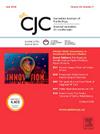外周动脉疾病患者心肌灌注显像后心血管风险的再评估
IF 5.3
2区 医学
Q1 CARDIAC & CARDIOVASCULAR SYSTEMS
引用次数: 0
摘要
背景:冠状动脉疾病(CAD)和外周动脉疾病(PAD)由于其共同的病理生理机制,通常被认为是主要不良心血管事件(MACE)的类似危险因素。我们的目的是研究PAD患者MACE风险升高是由心肌灌注异常还是通过其他PAD特异性介质驱动的。方法:我们分析了来自国际多中心注册的45252例接受SPECT心肌灌注成像的患者,不包括早期冠状动脉血运重建术的患者(结果:在3.6年的中位随访期间(IQR: 2.6 - 4.8年),5932例患者(13.7%)经历了至少一次MACE。与无疾病的患者相比,单独的CAD病史(aHR: 1.92, 95%CI: 1.80-2.05)与合并CAD和PAD病史(aHR: 1.57, 95%CI: 1.44-1.71)具有相似的MACE风险,并且比单独的PAD病史(aHR: 1.20, 95%CI: 1.09-1.32)具有更高的MACE风险。结论:尽管PAD患者经常合并CAD和更大的心肌灌注异常,但在调整这些因素后,PAD本身与更高的MACE风险无关。这些发现强调了评估PAD患者心肌缺血负担对风险分层和及时启动疾病改善治疗的重要性。本文章由计算机程序翻译,如有差异,请以英文原文为准。
Reassessing Cardiovascular Risk in Patients With Peripheral Artery Disease Undergoing Myocardial Perfusion Imaging
Background
Coronary artery disease (CAD) and peripheral artery disease (PAD) are often regarded as analogous risk factors for major adverse cardiovascular events (MACE), given their shared pathophysiology. We aimed to investigate whether the elevated MACE risk in PAD is driven by myocardial perfusion abnormalities or through other PAD-specific mediators.
Methods
We analyzed 45,252 patients from an international, multicentre registry who underwent SPECT myocardial perfusion imaging, excluding those with early coronary revascularization (< 90 days). Myocardial perfusion abnormalities were quantified using total perfusion deficit (TPD). MACE was defined as all-cause mortality, unstable angina admission, myocardial infarction, or late coronary revascularization. PAD was defined using questionnaires or review of electronic medical records. Propensity-score matching was used to select balanced groups of patients with and without PAD.
Results
During a median follow-up of 3.6 years (interquartile range [IQR]: 2.6-4.8 years), 5932 patients (13.7%) experienced at least 1 MACE. Compared with patients with neither disease, isolated history of CAD (adjusted hazard ratio [aHR], 1.92; 95% confidence interval [CI], 1.80-2.05) conferred a similar MACE risk as concomitant history of CAD and PAD (aHR, 1.57; 95% CI, 1.44-1.71) and greater risk than isolated history of PAD (aHR, 1.20; 95% CI, 1.09-1.32; P < 0.001). After propensity-score matching, history of PAD alone was not independently associated with increased MACE risk (P = 0.064).
Conclusions
Although patients with PAD often have concomitant CAD and greater myocardial perfusion abnormalities, PAD itself was not linked to higher risk of MACE after adjusting for these factors. These findings highlight the importance of assessing myocardial ischemic burden in PAD for risk stratification and prompt initiation of disease-modifying therapies.
求助全文
通过发布文献求助,成功后即可免费获取论文全文。
去求助
来源期刊

Canadian Journal of Cardiology
医学-心血管系统
CiteScore
9.20
自引率
8.10%
发文量
546
审稿时长
32 days
期刊介绍:
The Canadian Journal of Cardiology (CJC) is the official journal of the Canadian Cardiovascular Society (CCS). The CJC is a vehicle for the international dissemination of new knowledge in cardiology and cardiovascular science, particularly serving as the major venue for Canadian cardiovascular medicine.
 求助内容:
求助内容: 应助结果提醒方式:
应助结果提醒方式:


